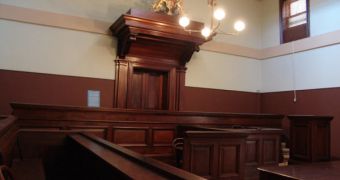In some of the most serious courtroom cases to date, eyewitness testimonies were crucial to bringing down known criminals, as well as other types of offenders. However, those who witnessed the crime were subjected to their own flawed memories, which meant that they could be believing that they were offering authorities an accurate depiction of the perpetrator, while at the same time bing dead wrong. Now, eyewitnesses' memories are about to get a boost, with the development of a new computer software, based on algorithms drawn from the fields of optics and genetics, ScienceDaily reports.
The new EFIT-V system will be presented next week, at the Frontiers in Optics (FiO) conference, the annual meeting of the Optical Society (OSA). At the event, which will take place between October 11-15 in San Jose, California, expert Christopher Solomon, a professor at the University of Kent, in the UK, will present his new design, which he says will help eyewitnesses remember as many details as possible, and police officers in apprehending criminals even faster than they do with conventional, forensics methods.
The software, which is already in use in about 12 police stations in the UK, as well as in selected precincts in France and Switzerland, has been utilized with great success, preliminary studies indicate. The Derbyshire police force, for example, reported that the EFIT-V was instrumental in identifying at least two times more criminals than those identified with conventional methods. Officials from the police department also say that the new method is a lot more effective than employing sketch artists to build a face based on an often-incomplete description.
The computer software learns adaptively. It begins with a basic description, such as a “white male with dark hair,” and displays nine types of common faces. The witness then selects the closest match, and the image that bears absolutely no resemblance to the criminal, and proceeds to the next step. The computer learns which type of faces not to exhibit, and goes in a single direction, always presenting nine new faces, with slightly different features than the previous generation. “Over a number of generations, the computer can learn what face you're looking for,” Solomon concludes.

 14 DAY TRIAL //
14 DAY TRIAL //